A Complete Guide to
Render onto ICF

What is ICF?
ICF is a modern method of construction and is becoming increasingly popular in the UK. ICF stands for Insulating Concrete Form. It is essentially a set of hollow foam blocks that are stacked into shape, reinforced with rebar steel and then filled with concrete.
These blocks work to increase the thermal capabilities of the insulation system, whilst creating a stable wall structure that is airtight and energy efficient.
Once the ICF structure has been installed, it should be finished with a Silicone Render. Below, we have created a handy buyers guide to equip you with all the knowledge you will need to understand the ICF system installation process.
1. Applying the Beading for ICF
A key component of the rendering onto ICF construction process is beading. This works to reinforce certain external wall areas that are more prone to damage than others.
The beads that will be required will depend on the areas that need reinforcement. For example, corners, doors and windows.
At EWI Store, our wide selection of render beads allows you to choose the perfect beading for your property. Our beads are uPVC and are designed to be embedded in the basecoat layer.
-
uPVC Render Corner Bead with Mesh and Nose (2.5m)
From £6.23 Incl. VATFrom £5.19 Excl. VAT
2. Preparing the Basecoat
When applying Silicone Render to ICF, we highly suggest the use of the EWI-225 Premium Basecoat. EWI-225 is our strongest basecoat, which will protect the ICF blocks once cured.
Simply use a paddle mix to mix the dry mix bag with 5.9L of water. Each bag of EWI-225 has coverage of 3.5m2, and a drying time of 24-48 hours.
-
Premium Basecoat (EWI-225) – 25kg
Rated 5.00 out of 5£20.90 Incl. VAT£17.42 Excl. VAT£23.23 Incl. VAT£19.36 Excl. VAT
3. Applying The Basecoat & Embedding The Mesh
Using a 10mm notched trowel, apply the basecoat to the ICF substrate. From there, embed fibreglass mesh to create the reinforced flexible basecoat layer. This layer reinforces the system with a strong, flexible and waterproof base.
At EWI store, we offer two high strength meshes to suit your individual project’s needs. Both meshes are coated with acrylic acid copolymer liquid for a long-lasting effect. Below is a breakdown of each mesh’s capabilities:
1) Orange Fibreglass Mesh: For guaranteed strength and flexibility. This mesh is water resistant
and protects against alkali damage and aging. 1 x 50m2 roll covers 42.5m2 when overlapped.
2) Panzer Fibreglass Mesh: Our strongest mesh available guarantees a premium level of impact
and crack resistance. Excellent protection against the elements. Each 25m2 roll will cover 22.5m2 when overlapped.
-
Premium Basecoat (EWI-225) – 25kg
Rated 5.00 out of 5£20.90 Incl. VAT£17.42 Excl. VAT£23.23 Incl. VAT£19.36 Excl. VAT -
Orange Fibreglass Mesh – 50m²
Rated 5.00 out of 5£57.48 Incl. VAT£47.90 Excl. VAT -
Panzer Fibreglass Reinforcement Mesh – 330g 25m²
Rated 4.00 out of 5£59.99 Incl. VAT£49.99 Excl. VAT
4. Priming the Basecoat
Priming the basecoat helps aid adhesion between the basecoat and the render and also limits absorption to the basecoat ensuring the render can cure correctly. Our EWI-333 Topcoat Primer is designed specifically for this purpose and can be tinted to match the colour of your silicone render.
EWI-333 has a drying time of 12-24 hours, depending on the coverage. Its coverage rates are listed
below:
- 7kg = 20m2
- 20kg = 60m2
-
Top Coat Primer (EWI-333)- 20kg
Rated 5.00 out of 5From £78.97 Incl. VATFrom £65.81 Excl. VAT -
Topcoat Primer (EWI-333) – 7kg
From £28.79 Incl. VATFrom £23.99 Excl. VAT
5. Applying Silicone Render to ICF
The final step in the rendering onto ICF process is to apply render once the Topcoat Primer has dried.
Since most of our renders are thin coat renders, the thickness of the topcoat depends on the grain size of the render. For example, the available grain sizes for EWI-075 Silicone Render are 1mm, 1.5mm, 2mm and 3mm. If you were to purchase the 2mm Silicone Render, your topcoat should be applied no thicker than 2mm.
Render should be applied using a trowel. Any excess render should always be removed. Use a plastic float to apply the render in a circular motion for your desired finish.
Below are the coverage rates you can expect from each grain size:
- 1.0mm = 12m2 – 13m2
- 1.5mm = 9m2 – 10m2
- 2.0mm = 7m2 – 8m2
- 3.0mm = 5m2 – 6m2
Silicone Silicate Render (EWI-040) – 25kg
Rated 5.00 out of 5
From £71.99 Incl. VATFrom £59.99 Excl. VAT
Silicone Render (EWI-075) – 25KG
Rated 4.83 out of 5
From £83.99 Incl. VATFrom £69.99 Excl. VAT
Premium Bio Silicone Render (EWI-076) – 25kg
Rated 4.00 out of 5
From £113.39 Incl. VATFrom £94.49 Excl. VAT
Nano Drex Silicone Render (EWI-077) 25kg
Rated 4.57 out of 5
From £151.19 Incl. VATFrom £125.99 Excl. VAT
Download our Complete Guides
All products mentioned are available in the EWI Store. If you have any further questions, our Sales team will be happy to assist on 0203 034 00 22.
You can download a copy of our complete guide below.
Explore our other solutions...
Your cart
Trade Account Login

We use cookies on our website to give you the most relevant experience by remembering your preferences and repeat visits. By clicking “Accept All”, you consent to the use of ALL the cookies. However, you may visit "Cookie Settings" to provide personalised consent.
Manage consent
Privacy Overview
This website uses cookies to improve your experience while you navigate through the website. Out of these, the cookies that are categorized as necessary are stored on your browser as they are essential for the working of basic functionalities of the website. We also use third-party cookies that help us analyze and understand how you use this website. These cookies will be stored in your browser only with your consent. You also have the option to opt-out of these cookies. But opting out of some of these cookies may affect your browsing experience.
Necessary cookies are absolutely essential for the website to function properly. These cookies ensure basic functionalities and security features of the website, anonymously.
| Cookie | Duration | Description |
|---|---|---|
| __stripe_mid | 1 year | This cookie is set by Stripe payment gateway. This cookie is used to enable payment on the website without storing any patment information on a server. |
| __stripe_sid | 30 minutes | This cookie is set by Stripe payment gateway. This cookie is used to enable payment on the website without storing any patment information on a server. |
| _GRECAPTCHA | 5 months 27 days | This cookie is set by the Google recaptcha service to identify bots to protect the website against malicious spam attacks. |
| apbct_cookies_test | session | CleanTalk sets this cookie to prevent spam on comments and forms and act as a complete anti-spam solution and firewall for the site. |
| apbct_page_hits | session | CleanTalk sets this cookie to prevent spam on comments and forms and act as a complete anti-spam solution and firewall for the site. |
| apbct_prev_referer | session | Functional cookie placed by CleanTalk Spam Protect to store referring IDs and prevent unauthorized spam from being sent from the website. |
| apbct_site_landing_ts | session | CleanTalk sets this cookie to prevent spam on comments and forms and act as a complete anti-spam solution and firewall for the site. |
| apbct_site_referer | 3 days | This cookie is placed by CleanTalk Spam Protect to prevent spam and to store the referrer page address which led the user to the website. |
| apbct_timestamp | session | CleanTalk sets this cookie to prevent spam on comments and forms and act as a complete anti-spam solution and firewall for the site. |
| apbct_urls | 3 days | This cookie is placed by CleanTalk Spam Protect to prevent spam and to store the addresses (urls) visited on the website. |
| AWSALBCORS | 7 days | This cookie is managed by Amazon Web Services and is used for load balancing. |
| cookielawinfo-checkbox-advertisement | 1 year | Set by the GDPR Cookie Consent plugin, this cookie is used to record the user consent for the cookies in the "Advertisement" category . |
| cookielawinfo-checkbox-analytics | 11 months | This cookie is set by GDPR Cookie Consent plugin. The cookie is used to store the user consent for the cookies in the category "Analytics". |
| cookielawinfo-checkbox-functional | 11 months | The cookie is set by GDPR cookie consent to record the user consent for the cookies in the category "Functional". |
| cookielawinfo-checkbox-necessary | 11 months | This cookie is set by GDPR Cookie Consent plugin. The cookies is used to store the user consent for the cookies in the category "Necessary". |
| cookielawinfo-checkbox-others | 11 months | This cookie is set by GDPR Cookie Consent plugin. The cookie is used to store the user consent for the cookies in the category "Other. |
| cookielawinfo-checkbox-performance | 11 months | This cookie is set by GDPR Cookie Consent plugin. The cookie is used to store the user consent for the cookies in the category "Performance". |
| ct_checkjs | session | CleanTalk–Used to prevent spam on our comments and forms and acts as a complete anti-spam solution and firewall for this site. |
| ct_fkp_timestamp | session | CleanTalk sets this cookie to prevent spam on the site's comments/forms, and to act as a complete anti-spam solution and firewall for the site. |
| ct_pointer_data | session | CleanTalk sets this cookie to prevent spam on the site's comments/forms, and to act as a complete anti-spam solution and firewall for the site. |
| ct_ps_timestamp | session | CleanTalk sets this cookie to prevent spam on the site's comments/forms, and to act as a complete anti-spam solution and firewall for the site. |
| ct_sfw_pass_key | 1 month | CleanTalk sets this cookie to prevent spam on comments and forms and act as a complete anti-spam solution and firewall for the site. |
| ct_timezone | session | CleanTalk–Used to prevent spam on our comments and forms and acts as a complete anti-spam solution and firewall for this site. |
| elementor | never | This cookie is used by the website's WordPress theme. It allows the website owner to implement or change the website's content in real-time. |
| viewed_cookie_policy | 11 months | The cookie is set by the GDPR Cookie Consent plugin and is used to store whether or not user has consented to the use of cookies. It does not store any personal data. |
Functional cookies help to perform certain functionalities like sharing the content of the website on social media platforms, collect feedbacks, and other third-party features.
| Cookie | Duration | Description |
|---|---|---|
| __zlcmid | 1 year | This cookie is used by Zendesk live chat and is used to store the live chat ID. |
| bcookie | 2 years | LinkedIn sets this cookie from LinkedIn share buttons and ad tags to recognize browser ID. |
| bscookie | 2 years | LinkedIn sets this cookie to store performed actions on the website. |
| lang | session | LinkedIn sets this cookie to remember a user's language setting. |
| lidc | 1 day | LinkedIn sets the lidc cookie to facilitate data center selection. |
| UserMatchHistory | 1 month | LinkedIn sets this cookie for LinkedIn Ads ID syncing. |
Performance cookies are used to understand and analyze the key performance indexes of the website which helps in delivering a better user experience for the visitors.
| Cookie | Duration | Description |
|---|---|---|
| __utma | 2 years | This cookie is set by Google Analytics and is used to distinguish users and sessions. The cookie is created when the JavaScript library executes and there are no existing __utma cookies. The cookie is updated every time data is sent to Google Analytics. |
| __utmb | 30 minutes | Google Analytics sets this cookie, to determine new sessions/visits. __utmb cookie is created when the JavaScript library executes and there are no existing __utma cookies. It is updated every time data is sent to Google Analytics. |
| __utmc | session | The cookie is set by Google Analytics and is deleted when the user closes the browser. It is used to enable interoperability with urchin.js, which is an older version of Google Analytics and is used in conjunction with the __utmb cookie to determine new sessions/visits. |
| __utmt | 10 minutes | Google Analytics sets this cookie to inhibit request rate. |
| __utmv | 2 years | The __utmv cookie is set on the user's device, to enable Google Analytics to classify the visitor. |
| __utmz | 6 months | Google Analytics sets this cookie to store the traffic source or campaign by which the visitor reached the site. |
| sib_cuid | 6 months | Purechat uses this cookie to send data to purechat.com, to connect visitors to the reservation team and track visitors to stay on portal. |
| SRM_B | 1 year 24 days | Used by Microsoft Advertising as a unique ID for visitors. |
Analytical cookies are used to understand how visitors interact with the website. These cookies help provide information on metrics the number of visitors, bounce rate, traffic source, etc.
| Cookie | Duration | Description |
|---|---|---|
| _ga | 2 years | The _ga cookie, installed by Google Analytics, calculates visitor, session and campaign data and also keeps track of site usage for the site's analytics report. The cookie stores information anonymously and assigns a randomly generated number to recognize unique visitors. |
| _gat_gtag_UA_61069204_2 | 1 minute | Set by Google to distinguish users. |
| _gat_UA-61069204-2 | 1 minute | A variation of the _gat cookie set by Google Analytics and Google Tag Manager to allow website owners to track visitor behaviour and measure site performance. The pattern element in the name contains the unique identity number of the account or website it relates to. |
| _gcl_au | 3 months | Provided by Google Tag Manager to experiment advertisement efficiency of websites using their services. |
| _gid | 1 day | Installed by Google Analytics, _gid cookie stores information on how visitors use a website, while also creating an analytics report of the website's performance. Some of the data that are collected include the number of visitors, their source, and the pages they visit anonymously. |
| _uetsid | 1 day | This cookies are used to collect analytical information about how visitors use the website. This information is used to compile report and improve site. |
| CONSENT | 2 years | YouTube sets this cookie via embedded youtube-videos and registers anonymous statistical data. |
Advertisement cookies are used to provide visitors with relevant ads and marketing campaigns. These cookies track visitors across websites and collect information to provide customized ads.
| Cookie | Duration | Description |
|---|---|---|
| _fbp | 3 months | This cookie is set by Facebook to display advertisements when either on Facebook or on a digital platform powered by Facebook advertising, after visiting the website. |
| ANONCHK | 10 minutes | The ANONCHK cookie, set by Bing, is used to store a user's session ID and also verify the clicks from ads on the Bing search engine. The cookie helps in reporting and personalization as well. |
| fr | 3 months | Facebook sets this cookie to show relevant advertisements to users by tracking user behaviour across the web, on sites that have Facebook pixel or Facebook social plugin. |
| MUID | 1 year 24 days | Bing sets this cookie to recognize unique web browsers visiting Microsoft sites. This cookie is used for advertising, site analytics, and other operations. |
| NID | 6 months | NID cookie, set by Google, is used for advertising purposes; to limit the number of times the user sees an ad, to mute unwanted ads, and to measure the effectiveness of ads. |
| test_cookie | 15 minutes | The test_cookie is set by doubleclick.net and is used to determine if the user's browser supports cookies. |
| uuid | 6 months | MediaMath sets this cookie to avoid the same ads from being shown repeatedly and for relevant advertising. |
| VISITOR_INFO1_LIVE | 5 months 27 days | A cookie set by YouTube to measure bandwidth that determines whether the user gets the new or old player interface. |
| YSC | session | YSC cookie is set by Youtube and is used to track the views of embedded videos on Youtube pages. |
| yt-remote-connected-devices | never | YouTube sets this cookie to store the video preferences of the user using embedded YouTube video. |
| yt-remote-device-id | never | YouTube sets this cookie to store the video preferences of the user using embedded YouTube video. |
| yt.innertube::nextId | never | This cookie, set by YouTube, registers a unique ID to store data on what videos from YouTube the user has seen. |
| yt.innertube::requests | never | This cookie, set by YouTube, registers a unique ID to store data on what videos from YouTube the user has seen. |
Other uncategorized cookies are those that are being analyzed and have not been classified into a category as yet.
| Cookie | Duration | Description |
|---|---|---|
| _clck | 1 year | No description |
| _clsk | 1 day | No description |
| _uetvid | 1 year 24 days | No description available. |
| AnalyticsSyncHistory | 1 month | No description |
| apbct_pixel_url | session | No description |
| apbct_visible_fields_0 | session | No description |
| apbct_visible_fields_1 | session | No description |
| apbct_visible_fields_10 | session | No description |
| apbct_visible_fields_2 | session | No description |
| apbct_visible_fields_3 | session | No description |
| apbct_visible_fields_4 | session | No description |
| apbct_visible_fields_5 | session | No description |
| apbct_visible_fields_6 | session | No description |
| apbct_visible_fields_7 | session | No description |
| apbct_visible_fields_8 | session | No description |
| apbct_visible_fields_9 | session | No description |
| ct_checked_emails | session | No description |
| ct_has_scrolled | session | No description |
| ct_mouse_moved | session | No description |
| ct_screen_info | session | No description |
| ictf_master | never | No description available. |
| li_gc | 2 years | No description |
| m | 2 years | No description available. |
| SM | session | No description available. |
| testinfinitycookie | session | No description |
| woocommerce_show_tax | 7 days | No description available. |
| wp_woocommerce_session_c5ac76b408021294cb56bcc27eddf8a1 | 2 days | No description |


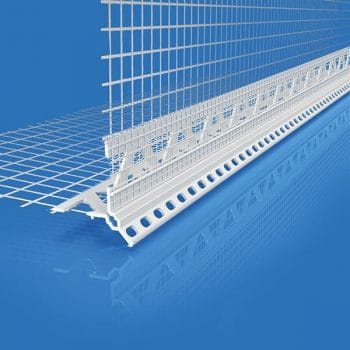


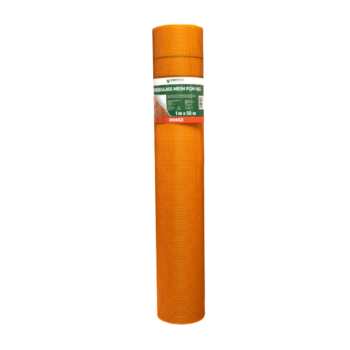
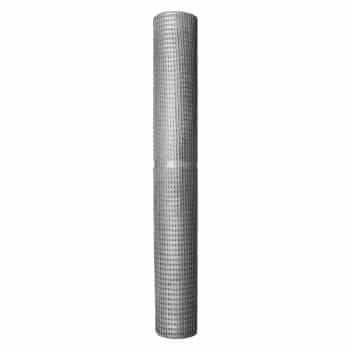

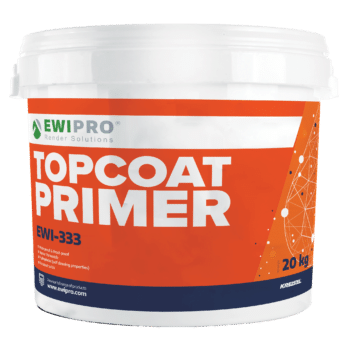
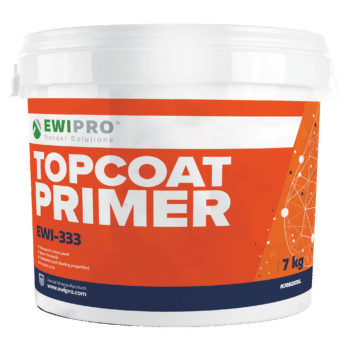

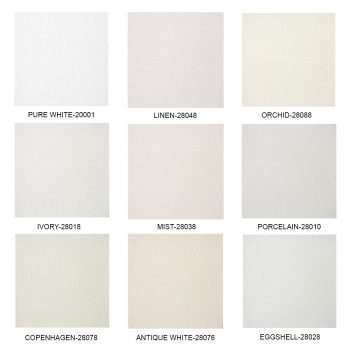
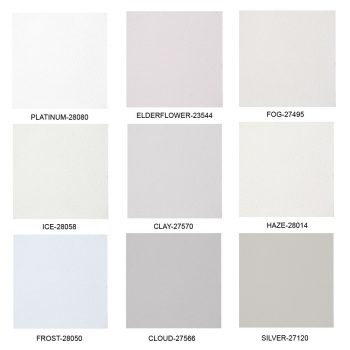
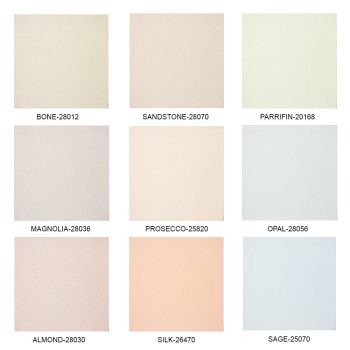
2 thoughts on “Render onto ICF”
What is the final thickness of the base coat on icf is it 3mm, 4mm or 6mm
Top coat being 2mm or 3mm
What beads are recommended
Hi Peter, basecoat layer should be 6mm. When you use Silicone Render, the topcoat thickness should match the grain size.